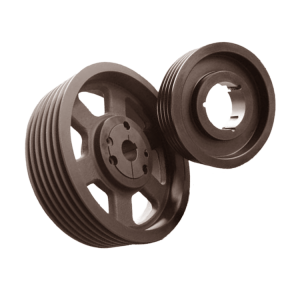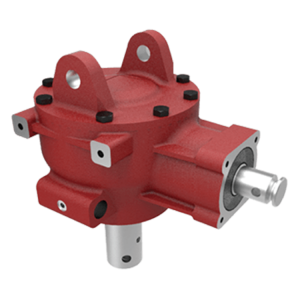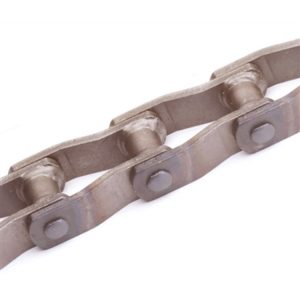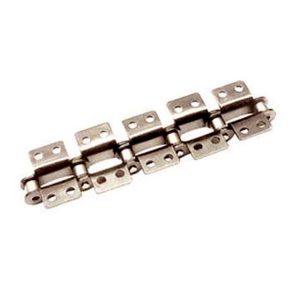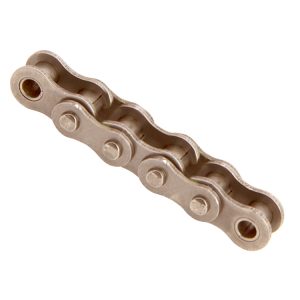Product Description
Factory Price High Precision Aluminum Timing Belt Pulley With Customized
We are HangZhou CHINAMFG Gear Machinery Co., LTD, and Newgear Planetary Transmission Co.,Ltd , My boss have 3 companies.
We are a large-scale manufacturer with 25 years of experience in manufacturing gears, synchronous wheels and reducers in HangZhou.
There are more than 500 employees.
HangZhou CHINAMFG Gear Machinery Co., Ltd. is HangZhou’s largest and leading gear transmission supplier in the Pearl River Delta. Famous-brand precision traditional enterprise in the industry. The main products include synchronous belt series. Precision gear grinding series. Three major areas such as planetary reducer series. Very Famous brand iHF, high precision. We can offer you pulley as your design.
Concentricity : 0.02-0.03mm
Main Features:
1. OEM/ODM tooth number from 10 to 72 timing pulley ,Or more teeth.
2. Material can be designed by customer requirement
3. High torque series S2M S3M S5M S8M P2M P3M P5M P8M
4. Normal torque series MXL XL L H
5. High precision drive series 2GT 3GT 5GT 8YU
6. Light load drive series T5 T10
7. Heave load drive series AT5 AT10
8. Clamping Timing Pulleys S3M S5M S8M
9.Good quality products
10.Competitive prices
11.Fast delivery
12.Best after-sale service
13.Brand: HeFa or OEM & ODM
14.Synchronous pulley shape:A /B/D/E/F/K
Basic Information:;
| Specification | Standard or Custom made |
| Material | Stainless steel,;,;brass,; carbon steel,; aluminum,; and so on.; |
| Surface Treatment | Zn-plating,; Ni-plating,; Cr-plating,; Tin-plating,; Copper-plating,; the wreath oxygen resin spraying,; black oxide coating,; painting,; powdering,; color zinc-plated,;blue black zinc-plated,; silver plating,;anodizing etc.; |
| Main Products | Precision spur gear,; Timing pulley,; Bevel pulley,; Worm& worm gear,; Timing Belt.;.; |
| Producing Equipment | CNC machine ,; automatic lathe machine,;stamping machine,;CNC milling machine,;rolling machine,; lasering,; tag grinding machine etc.; |
| Management System | ISO9001 – 2008 |
| Testing Equipment | Projecting apparatus,; Salt Spray Test,; Durometer,; and Coating thickness tester ,; 2D projector |
| Lead time | 10-15 working days as usual,; 30days in busy season,; it will based on the detailed order quantity.; |
| Delivery of Samples | By DHL,; Fedex,; UPS,; TNT,; EMS |
| Main Markets | North America,; South America,; Eastern Europe ,; West Europe ,; North Europe,; South Europe,; Asia |
| How to order | You send us drawing or sample |
| We carry through project assessment | |
| We give you our design for your confirmation | |
| We make the sample and send it to you after you confirmed our design | |
| You confirm the sample then place an order and pay us 30% deposit | |
| We start producing | |
| When the goods is done,; you pay us the balance after you confirmed pictures or tracking numbers.; | |
| Trade is done,; thank you!! | |
| Applications | Toy,; Automotive,; instrument,; electrical equipment,; household appliances,; furniture,; mechanical equipment,;daily living equipment,; electronic sports equipment,; ,; sanitation machinery,; market/ hotel equipment supplies,; etc.; |
Shipping
Contact person: Sunny.
We offer pulley, gear, gearbox. and other product.
OEM, ODM.
/* January 22, 2571 19:08:37 */!function(){function s(e,r){var a,o={};try{e&&e.split(“,”).forEach(function(e,t){e&&(a=e.match(/(.*?):(.*)$/))&&1
| Certification: | CE, ISO |
|---|---|
| Pulley Sizes: | Type B |
| Manufacturing Process: | Machining |
| Material: | Aluminum |
| Surface Treatment: | Electroplating |
| Application: | Chemical Industry, Grain Transport, Mining Transport, Power Plant, Printing |
| Samples: |
US$ 1/Piece
1 Piece(Min.Order) | |
|---|
| Customization: |
Available
| Customized Request |
|---|
Can you explain the concept of “efficiency” in pulley systems?
In pulley systems, efficiency refers to the ratio of output work or power to the input work or power, taking into account any losses or inefficiencies in the system. It represents how effectively the pulley system converts the input energy into useful output energy.
The efficiency of a pulley system can be affected by various factors, including friction, mechanical losses, and the design and condition of the pulleys and ropes. Here are some key points to understand about efficiency in pulley systems:
1. Mechanical Advantage and Efficiency: Pulley systems can provide a mechanical advantage by reducing the effort force required to lift a load. However, it’s important to note that while a higher mechanical advantage generally means less effort is needed, it may also result in lower efficiency. This is because as the mechanical advantage increases, the system may experience higher frictional losses and other inefficiencies.
2. Friction and Efficiency: Friction plays a significant role in the efficiency of pulley systems. The interaction between the pulley wheels and the ropes or belts can result in frictional losses, which reduce the overall efficiency of the system. Friction can be minimized by using pulleys with low-friction bearings or by lubricating the contact surfaces.
3. Rope or Belt Material: The choice of rope or belt material can impact the efficiency of a pulley system. Different materials have varying coefficients of friction, flexibility, and durability, which can affect the overall efficiency. For example, using a rope or belt with low friction and high strength can help reduce energy losses and improve efficiency.
4. Pulley Design and Condition: The design and condition of the pulleys also influence efficiency. Pulleys should be properly aligned, have smooth surfaces, and be free from damage or wear. Misaligned or worn pulleys can increase friction and decrease efficiency.
5. System Load: The efficiency of a pulley system can vary based on the magnitude of the load being lifted or moved. Higher loads can result in increased friction and mechanical losses, leading to lower efficiency.
Efficiency is typically expressed as a percentage, with 100% representing a perfectly efficient system where all the input energy is converted into useful output energy. In real-world pulley systems, efficiency is often less than 100% due to various factors, including friction, heat generation, and other losses.
It’s important to consider efficiency when designing or evaluating pulley systems. Higher efficiency means a more effective use of input energy, reduced energy waste, and improved overall performance.
Can pulleys be used for both horizontal and vertical lifting?
Yes, pulleys can be used for both horizontal and vertical lifting. The versatility of pulley systems allows them to be utilized in various lifting applications, regardless of the direction of the load. Here’s how pulleys can be used for horizontal and vertical lifting:
1. Horizontal Lifting: In horizontal lifting scenarios, pulleys can be employed to change the direction of the force applied to the load. By using a combination of fixed and movable pulleys, the force can be redirected to pull the load horizontally. This is commonly seen in applications such as manual hoists or block and tackle systems used in construction, where heavy objects need to be moved horizontally across distances.
2. Vertical Lifting: Pulleys are widely used in vertical lifting applications, such as cranes, elevators, and lifting systems. In these setups, the pulleys are typically arranged in such a way that the load can be lifted vertically. By using multiple pulleys and ropes or cables, mechanical advantage can be achieved, making lifting heavier loads easier. The pulleys distribute the load’s weight across multiple lines, reducing the effort required to lift the load.
It’s worth noting that the number and arrangement of pulleys can vary depending on the specific lifting requirements. For example, a single fixed pulley can change the direction of the force but does not provide any mechanical advantage. On the other hand, systems with multiple pulleys, such as compound pulley systems or block and tackle setups, can provide significant mechanical advantage, making lifting heavier loads more manageable.
Whether it is horizontal or vertical lifting, the principles of pulley mechanics remain the same. Pulleys allow for force redirection, mechanical advantage, and load distribution, making lifting tasks more efficient and manageable. The specific configuration and setup of the pulley system will depend on the lifting requirements and the desired level of mechanical advantage.
What are the different types of pulleys commonly used in industry?
Pulleys are widely used in various industries for different applications. Here are the different types of pulleys commonly used:
1. Fixed Pulleys: Fixed pulleys are attached to a stationary structure, such as a ceiling or wall. They change the direction of the force applied without providing any mechanical advantage. Fixed pulleys are often used in combination with other pulleys to create more complex systems.
2. Movable Pulleys: Movable pulleys are attached to the load being moved, and they move along with it. These pulleys provide mechanical advantage by reducing the effort required to lift the load. Movable pulleys are commonly used in systems such as block and tackle arrangements to lift heavy objects with less force.
3. Compound Pulleys: Compound pulleys consist of a combination of fixed and movable pulleys. They provide a greater mechanical advantage than a single pulley by distributing the load over multiple segments of the rope or belt. Compound pulley systems are often used in applications that require lifting extremely heavy loads.
4. Snatch Blocks: Snatch blocks are pulleys with a side plate that can be opened to insert or remove a rope or cable without threading it through the pulley. They are commonly used in rigging and towing applications to change the direction of force and create a mechanical advantage.
5. V-Belt Pulleys: V-belt pulleys have a V-shaped groove that matches the cross-section of V-belts. They are used in belt drive systems to transmit power between two shafts. V-belt pulleys are commonly found in applications such as industrial machinery, automotive engines, and HVAC systems.
6. Timing Pulleys: Timing pulleys have teeth that mesh with the teeth of a timing belt. They are used in synchronous drive systems to ensure accurate and synchronized power transmission. Timing pulleys are commonly used in applications such as robotics, printing presses, and CNC machines.
7. Rope Pulleys: Rope pulleys have a smooth surface designed to minimize friction and prevent wear on ropes. They are commonly used in applications where ropes are used for lifting or pulling, such as cranes, elevators, and material handling equipment.
8. Wire Rope Pulleys: Wire rope pulleys are specifically designed for use with wire ropes. They have grooves or pockets that accommodate the shape and size of wire ropes, ensuring secure grip and efficient force transmission. Wire rope pulleys are commonly used in applications such as cranes, winches, and hoists.
9. Idler Pulleys: Idler pulleys are used to guide and tension belts or ropes in a system. They do not transmit power but help maintain proper belt tension and alignment. Idler pulleys are commonly used in conveyor systems, automotive engines, and other belt-driven applications.
10. Sheave Pulleys: Sheave pulleys are large pulleys used in heavy-duty applications, such as crane systems and elevators. They are designed to handle high loads and provide smooth and reliable operation. Sheave pulleys often have multiple grooves to accommodate multiple ropes or belts.
These are some of the different types of pulleys commonly used in various industries. Each type has specific features and is selected based on the requirements of the application, such as load capacity, power transmission, and operational conditions.
editor by CX
2024-05-07










